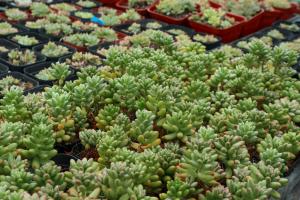Are Tomatoes and Garlic Companion Plants?
Companion planting is the practice of planting different crops together to create mutual benefits. For example, some plants repel pests that may attack others, while other plants may enhance soil fertility for their neighboring plants. One question that often arises is whether tomatoes and garlic are good companion plants. Let's take a closer look.
The Benefits of Companion Planting
Companion planting has been found to have many benefits, including:
Increasing soil fertility
Attracting beneficial insects such as pollinators and predators of pests
Repelling harmful insects
Reducing weed growth
Improving overall crop yields
The Relationship between Tomatoes and Garlic
Tomatoes and garlic are often considered compatible plants because they can offer each other benefits when planted in close proximity. Garlic has natural insect-repelling properties that can help keep pests away from tomato plants. Similarly, tomatoes can attract beneficial insects that prey on pests that may attack garlic.
Additionally, garlic has been found to improve soil fertility, which can benefit nearby tomato plants. Garlic is known to be a heavy feeder, meaning it requires a lot of nutrients from the soil. As it grows, it releases compounds into the soil that can benefit the growth of other plants, including tomatoes.
How to Plant Tomatoes and Garlic Together
In order to get the most benefits from planting tomatoes and garlic together, it's important to follow some guidelines:
Plant garlic in the fall before planting your tomato seedlings in the spring.
Space garlic and tomato plants about 12 inches apart to avoid overcrowding and allow for proper air circulation.
Plant garlic around the perimeter of your tomato bed to help deter pests.
Plant your tomato seedlings several inches deeper than they were planted originally to provide additional support and create a barrier between them and the garlic.
Other Companion Plants for Tomatoes
While garlic is a great companion plant for tomatoes, there are other plants that can offer similar benefits. Some of these companion plants include:
Basil: Helps repel mosquitoes, flies, and tomato hornworms
Marigold: Produces chemicals that repel harmful nematodes
Nasturtium: Attracts aphids away from tomatoes
Chives: Repels aphids and attracts pollinators
Beans: Help improve soil fertility and attract beneficial insects
Conclusion
Tomatoes and garlic are great companion plants that can provide each other with many benefits, including improved soil fertility and natural pest control. By following some basic guidelines and planting other companion plants, you can create an ecosystem in your garden that benefits all your plants and improves your overall crop yields.

 how many times do yo...
how many times do yo... how many planted tre...
how many planted tre... how many pine trees ...
how many pine trees ... how many pecan trees...
how many pecan trees... how many plants comp...
how many plants comp... how many plants can ...
how many plants can ... how many plants and ...
how many plants and ... how many pepper plan...
how many pepper plan...































